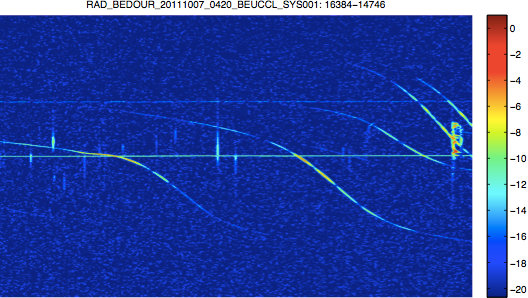Like every year, Earth passes at this very moment through the trajectory of the Perseid dust cloud left behind by the comet Swift-Tuttle. Part of this dust plunges into the Earth atmosphere giving us a night sky filled with bright falling stars.
Falling stars are in fact meteors and not really stars. Meteors can also be heart when transmitted radio signals bounce back on them and mark in this way the presence of a meteor. At the space pool, scientists are eager to detect meteors through this technique. The received signals are put in a typical BRAMS graph.

BRAMS is the name of this scientific project. These graphs need to be interpreted and analysed to map for example the activity of the Perseid meteorswarm and check when the meteor shower peaks. For this, the BRAMS scientists need as much help as possible, for example from you: www.radiometeorzoo.eu
Everybody can do this and it’s fun to do!
At the moment of writing it is still possible to enjoy the Perseid falling stars live: find a dark place outside, lay on your back and enjoy. The shower will peak on August 11-12. Late night is the best time.
For more science background on BRAMS, check the website.





